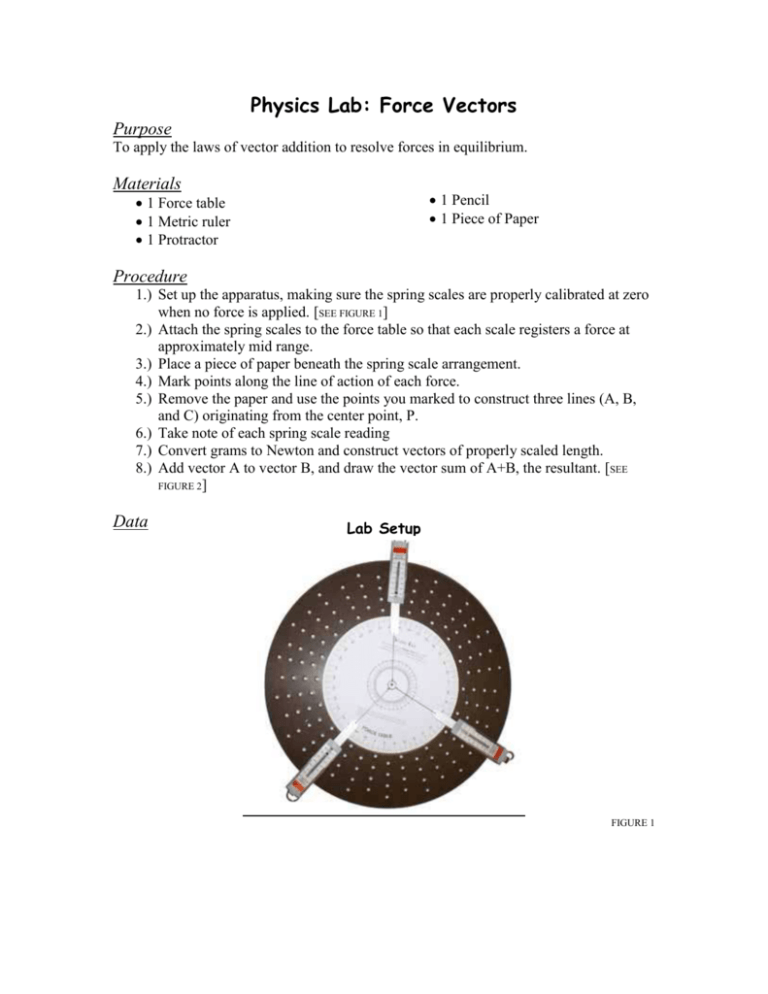Physics Lab: The Paper Tower
advertisement

Physics Lab: Force Vectors Purpose To apply the laws of vector addition to resolve forces in equilibrium. Materials 1 Pencil 1 Piece of Paper 1 Force table 1 Metric ruler 1 Protractor Procedure 1.) Set up the apparatus, making sure the spring scales are properly calibrated at zero when no force is applied. [SEE FIGURE 1] 2.) Attach the spring scales to the force table so that each scale registers a force at approximately mid range. 3.) Place a piece of paper beneath the spring scale arrangement. 4.) Mark points along the line of action of each force. 5.) Remove the paper and use the points you marked to construct three lines (A, B, and C) originating from the center point, P. 6.) Take note of each spring scale reading 7.) Convert grams to Newton and construct vectors of properly scaled length. 8.) Add vector A to vector B, and draw the vector sum of A+B, the resultant. [SEE FIGURE 2] Data Lab Setup FIGURE 1 Data cont’d Data Obtained The Resultant Vector B: 11.0 N, 111° A+B A: 11.0 N, 0° B A C C: 12.0 N, 240° NOTE: Values are rounded and figure isn’t drawn exactly to scale. FIGURES 2 &3 Observations & Calculations 1.) On a separate piece of paper, draw the vectors obtained from your experimental procedure. [SEE FIGURE 2] 2.) Calculate the respective velocities and velocity increases. [SEE FIGURE 2] d 4.5 V0.25s 270 t .016 V.283s d.283s d.266s 300cm / s 282cm / s 18cm / s Analysis What is the number scale you chose for your model? o I chose to scale my vectors with one Newton equaling one centimeter. What is the result of the addition of vectors A and B? o It produced a vector that is in the opposite direction with the same amount of force, magnitude, as C. When vector A, B, and C were added together what was the result? o I got a near perfect triangle the vector for C wasn’t quite long enough, but it was very close. Conclusion This lab shows us you can have more than two forces acting on an object and still have the object remain stationary. In this case, three different force vectors acted on a center point each with their own respective magnitude and direction. The addition of any combination of two of these forces results in a force of the same strength in the opposite direction of the remaining vector. These vectors cancel each other out and produce equilibrium resulting in no acceleration. With the same parameters it would also work for any number of forces acting on an object providing the center point remains stationary.






